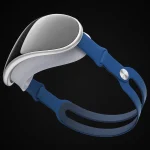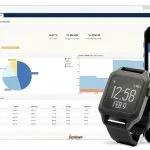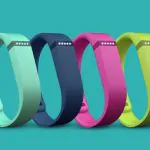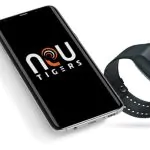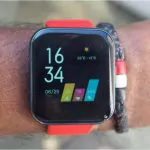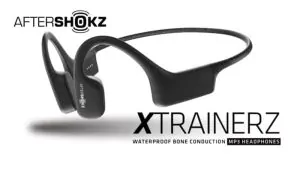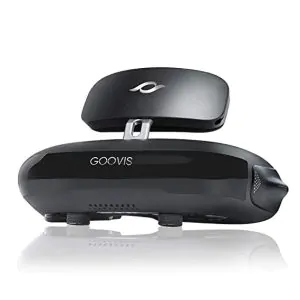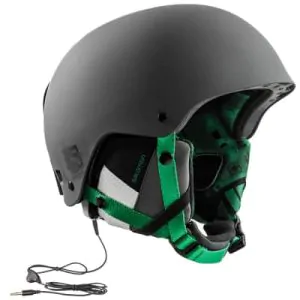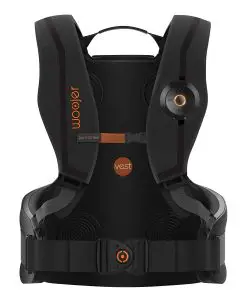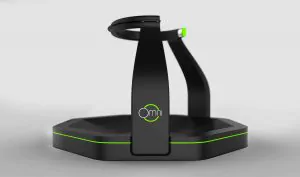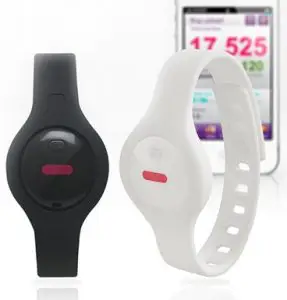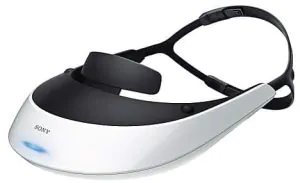The Zepp Z is the second smartwatch from the brand now owned by Huami. That’s the same Huami that owns Amazfit and manufactures smartwatches and fitness trackers.
Zepp used to make golfing and baseball trackers, but was snapped up by Huami and is now its US-based outlet for smartwatches.
The Zepp Z comes just months after Zepp E, which arrived in circle and square designs. It’s a sleek-looking smartwatch, although it didn’t wow us with a lack of GPS and underwhelming sports tracking.
Good looks are irrelevant though if you can’t deliver the software goods. So does the Zepp Z do that price tag justice? We’ve been living with the Android and iOS-friendly smartwatch to find out. Here’s our full verdict.
Zepp Z price and alternatives
With the Zepp Z, you’re getting a smartwatch with more classic watch styling and a lot of the same fitness and smart features. That includes offline and online voice assistants, SpO2 monitoring and the promise of over two weeks of battery life.
That more luxurious look, comes at a greater cost than the Zepp E. It comes in priced at £320 making it around £100 more expensive than Zepp’s first smartwatch. That also makes it pricier than an Apple Watch SE, the Garmin Venu, Fitbit Sense or Skagen Falster 3.
Zepp Z: Design and screen
We liked the sleek, bezel-less Zepp E but the Zepp Z is attractive in a totally different way.
You’re getting a round, 45mm size titanium alloy watch case paired up with a 22m removable brown leather band, which is in stark contrast to the minimalist, black stainless steel look we got on the Zepp E.
It’s a smartwatch with classic watch-style aspirations and it does by in large deliver on those.
The silver case and leather are a good combo and while we’d have preferred a more worn in leather band to go with it, it’s altogether a really attractive look.
The 10.75mm thickness means it’s doesn’t sit bulky on your wrist and it’s light at 40g too. It’s also got a 5ATM water resistant rating, which means it’s safe to swim with up to 50 metres depth. Just make sure you change that band first though.
That classic watch feel extends to the pair of physical buttons and twisting crown placed on the right side of the casing. The bottom button gets you quick access to workout tracking out of the box, while the crown pushes you into the menu, can be twisted to scroll through menus and wakes up the watch.

Then there’s the top button, which marks a peculiar design decision by Huami. It looks like you can press it, but you can’t.
When Huami rolls out a software update, it will be used to quickly take heart rate, stress and SpO2 readings. Until then, it’s a pretty useless button that you can’t help finding yourself pressing it hoping it will do something.
Where the Z doesn’t disappoint is in the screen department. It packs a 1.39-inch, 454 x 454 resolution AMOLED display with 550 nits maximum brightness. That’s the exact same screen featured on the Huami made Amazfit GTR 2 and just like we had good things to say about it there, it’s more of the same on the Zepp Z.
It’s bright, sharp, offers good colours and is a high quality AMOLED screen. Viewing angles are strong too and you don’t need to have the screen at top brightness to get something that’s on the whole enjoyable to use.
Zepp Z: Smartwatch features

The Zepp Z is compatible with iOS and Android smartphones running on the latest versions of their respective operating systems, giving you access to a good array of smartwatch features that on the whole work well.
Once you’ve switched on the notification support in the Zepp companion app for the notifications you want fired over, those messages are well optimised for the Z’s screen though there’s no way to act on notifications.
Notifications from emails for example will just give you sender and subject line, while you’ll get some, but not all of your WhatsApp messages. There’s definitely room for improvement here.
There’s over 50 watch faces to mix those looks up and these are very similar options to the ones found on the Amazfit GTR and GTS 2 watches. There’s a nice mix of digital and analogue-style faces where you can stack them with data or keep things simple.

Navigating the watch UI is pretty simple and it has a Wear OS feel with its widget-style screens you can swipe through, some quick settings to access and the Health Key, which we mentioned hasn’t been enabled yet.
There’s a microphone on board to make use of the offline voice assistant, which works in similar fashion to the one on the Amazfit GTR 2 and GTS 2 giving you hands-free control to core features like music controls and switching on/off settings. It was responsive for us on the whole and a nice addition to a modest set of smartwatch features.
You also get Amazon Alexa integration, though that voice assistant is not yet available, and will be coming in an OTA software update.
The smartwatch features that are here work well enough, but you’ll find more features for similar money elsewhere. There’s no payments, apps or music player here. If you’re happy with basic notification support and an operating system that by in large is easy to get to grips with, then you might just be content with what you get with the Zepp Z.
Zepp Z: Fitness features

From fitness tracking perspective, everything we got in on the Zepp E has made it into the Zepp Z. The major difference being this doesn’t feel like it can switch between workout and day-to-day use in the same way that you can with the Zepp E. For starters, you’ll certainly need a sweat-resistant strap.
Sensors-wise, it packs everything to make it a good tracking companion. There’s Huami’s Biotracker 2 optical sensor to unlock continuous heart rate monitoring and heart rate tracking during exercise.
That’s also used for stress monitoring and enabling the PAI Health assessments we’ve already seen on Amazfit watches. You’ve also got the ability to take blood oxygen measurements and there’s an air pressure sensor to offer richer outdoor metrics too.
You’ve got built-in GPS and GLONASS to more accurately track outdoor activities, which was missing on the Zepp E.
There are 12 sports modes in total and that includes open water swimming, trail running, skiing and climbing.
Naturally, there’s also 24/7 fitness tracking and sleep and nap monitoring.

Step tracking compared: Zepp Z (left and centre) and Garmin fitness tracker (right)
Performance-wise, it’s much of what we’ve seen from the most recent Amazfit smartwatches we’ve tested.
It’s a better fitness tracker than sports watch – so if you’re tossing up between this and a Garmin, there’s only one winner.
For daily tracking like steps and distance covered, we compared it to a Garmin’s fitness tracking features and found that steps were within 500-1,000 steps of the Garmin and distance tracked was largely in the same ballpark. You do miss out on flights and stairs climbed due to the lack of an altimeter.
For sleep monitoring, we switched over to the Fitbit Sense for comparison, as we find that the most accurate in the business.
The Zepp Z gives you a breakdown of deep, light and REM sleep. It’ll also produce a sleep score, offer some insights, how you compare to other users and will also track your naps.

Sleep tracking compared: Zepp Z (left and centre) and Fitbit Sense (right)
We found that sleep data wasn’t wildly off from what the Fitbit recorded. It was generally in-line capturing sleep duration albeit it clocked us taking longer to fall asleep.
Though there were the odd nights where we had woken up and fallen back to sleep and it had stopped capturing data. There’s clearly a few little niggles here, but on the whole it did a good job.

Run tracking compared: Zepp Z (left and centre) and Garmin Fenix 6 (right)
Switching to sports mode and we largely put its outdoor running and free training mode to track indoor workouts to the test.
For running, it coped well from an accuracy point of view for tracking 30-40 minute runs. Core running metrics were in line with the Garmin Fenix 6 we pitted it against.
Stretch things further distance-wise and those inaccuracies do start to creep in. For most though, it should provide a decent running companion.

Indoor row tracking compared: Zepp Z (left) and Garmin Fenix 6 with chest strap monitor (right)
For indoor workouts, it keeps things to the basics as far as what you can track and if you’re relying on heart rate data, it actually fared pretty well for us in general much to our surprise and having to wear a leather band to work out with.
It also held up on steady runs up against chest strap monitor. Throwing some high intensity action into the mix will see it start to falter, but in general we were pleasantly surprised with the Zepp Z’s heart rate performance.

Heart rate tracking compared: Zepp Z (left) and Garmin Fenix 6 with chest strap monitor (right)
That BioTracker optical sensor proved reliable for daily heart rate data and powering stress monitoring features as well. We also found the SpO2 readings generated from that sensor largely matched up with what we got from a dedicated pulse oximeter we tested readings against as well.
Bottom line, if you do a bit of running and swimming and more interested in those daily data and insights, you should be satisfied with what the Zepp Z offers.
Zepp Z: Battery life
The Zepp Z hosts a 340mAh battery, which is capable of 15 days battery life in typical use and 30 days in basic watch mode. It also charges from 0-100% in 2.5 hours.
Though much like we found with the Zepp E, those numbers can feel a bit generous given you’re likely to want to put to use battery-sapping features like richer sleep tracking, continuous heart rate monitoring and making regular use of notification support.
We tended to see a battery drop-off of around 10-15% a day, with GPS use for 30 minutes seeing a drop off around 3-4%. We got 10 days use out of it, which is still pretty good, but not quite the 15 days.
It clearly does have the capacity to go for 2 weeks, but it does mean being mindful of the features you use, or keeping the screen at moderate brightness, which should be fine for most.
If you want a smartwatch that comfortably lasts a week and can get you longer, the Zepp Z is certainly capable of achieving that.
Zepp Z
By Huami
The Zepp Z makes a far better impression than the Zepp E does outside of looking like a slick operator on your wrist. It offers a nice mix of smartwatch and fitness features that on the whole work well. The problem we have here is the price seems a little off, especially when you factor what’s available in its price bracket. It’s certainly a solid and stylish performer, but you might get better value for money looking in the direction of Apple and Fitbit.
- Attractive design
- Good battery life
- Easy to use
- Some niggly software issues
- Limited smartwatch features
- Pricey
